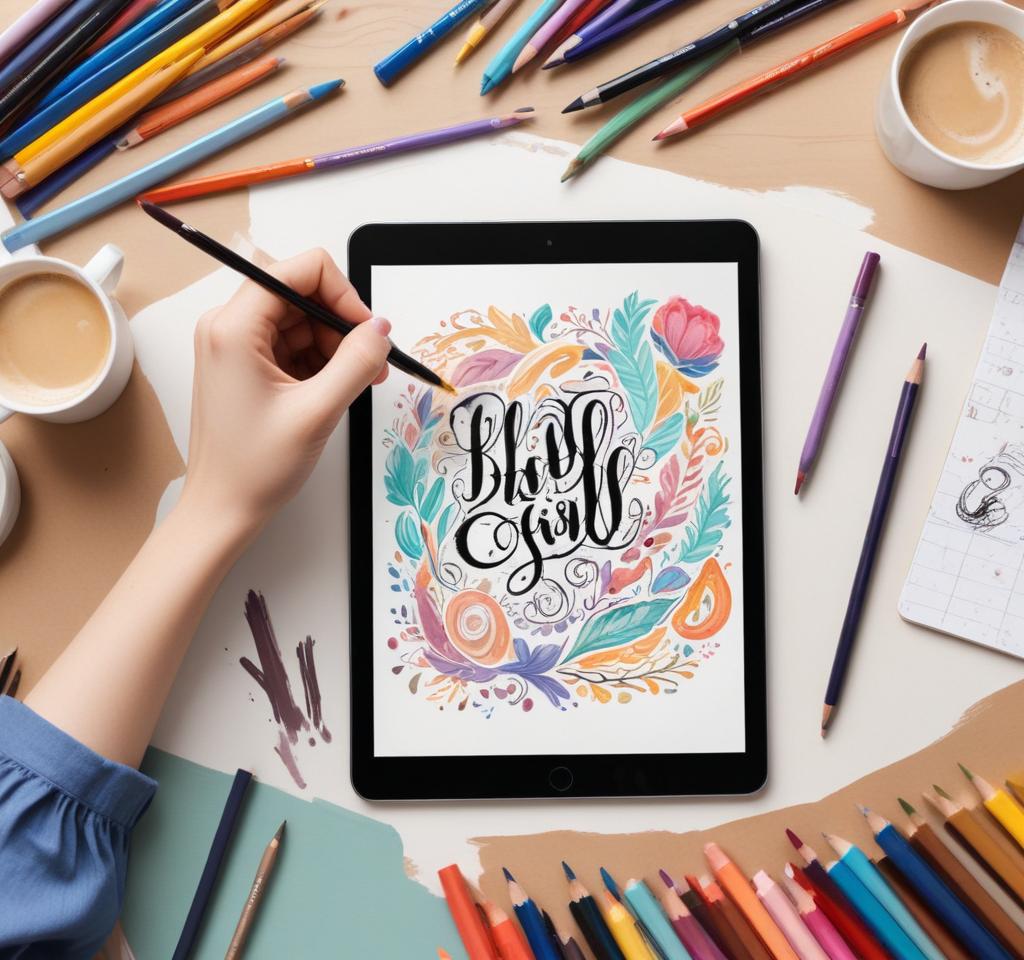
The Art of Calligraphy: A Blend of Tradition and Technology
With its elegant strokes and timeless appeal, calligraphy has found an intriguing balance in today’s tech-driven world. For centuries, traditional calligraphy—crafted with ink and paper—has been a symbol of grace. But now, digital calligraphy offers artists a modern alternative, where complex designs come to life with just a few clicks. So, what sets these two styles apart? Which one is right for you? Let’s dive into the pros and cons of traditional and digital calligraphy to help you find your artistic path.
Traditional vs. Digital Calligraphy
Traditional Calligraphy: The Pros and Cons
Pros:
- Hands-On Craftsmanship: There’s something deeply personal about traditional calligraphy. Every stroke is done by hand, making each piece unique and filled with character. As you practice, you’ll see your skills improve, adding to the satisfaction of creating something truly special.
- Meditative Experience: Many people find the slow, thoughtful process of traditional calligraphy almost meditative. It’s a chance to disconnect from the digital world, focus your mind, and enjoy the calming rhythm of pen on paper.
- Cultural Connection: Traditional calligraphy connects you to a rich history. By practicing this ancient art form, you’re continuing a legacy passed down through generations.
Cons:
- Time-Intensive: Traditional calligraphy demands patience. Each letter requires care, making it a slow process. If you’re looking for quick results, this may not be the best fit.
- Cost of Materials: High-quality pens, paper, and ink can add up, and mistakes mean using even more supplies. This can make traditional calligraphy a bit expensive to maintain.
- Physical Strain: Long hours of writing can cause hand and wrist fatigue, especially when working on larger projects or practicing for extended periods.
Digital Calligraphy: The Pros and Cons
Pros:
- Versatility and Flexibility: One of digital calligraphy’s greatest strengths is how easily changes can be made. A mistake? No problem—just hit undo. Need to adjust the design? Tweak a layer. This flexibility is perfect for modern projects like logos, invitations, or social media posts.
- Effortless Sharing: Once your digital artwork is complete, distributing it is a breeze. Whether you’re sending files to a client or posting your designs online, digital calligraphy makes it simple to share your work with the world.
- Accessible Tools: Unlike traditional calligraphy, which requires specific tools, digital calligraphy only needs a tablet or even a smartphone. There are many affordable or free apps that can recreate the look of traditional styles.
Cons:
- Less Personal Touch: Some feel that digital calligraphy lacks the warmth and individuality of hand-drawn work. Without the tactile experience of pen and paper, art can sometimes feel less personal.
- Learning Curve: Mastering digital tools like Procreate or Adobe Illustrator can be tricky, especially for those new to digital art. It might take time to feel comfortable with the software.
- Dependence on Technology: Your creativity is somewhat limited by the tech you use. Hardware issues, software glitches, or outdated tools can occasionally interrupt your creative flow.
Which Style is Right for You?
Both traditional and digital calligraphy bring their own unique strengths and challenges. If you’re drawn to the tactile experience of ink on paper and enjoy the slower, more meditative process, traditional calligraphy might be your calling. On the other hand, if you value versatility, speed, and the ease of sharing your work, digital calligraphy may be the way to go.
CreativeAlif – a logo design company in the UAE expertly incorporates digital calligraphy into their work—whether in English or Arabic. They are known for delivering the best, which is why so many brands trust them with their designs.
Ready to see the difference for yourself? Contact CreativeAlif today!
